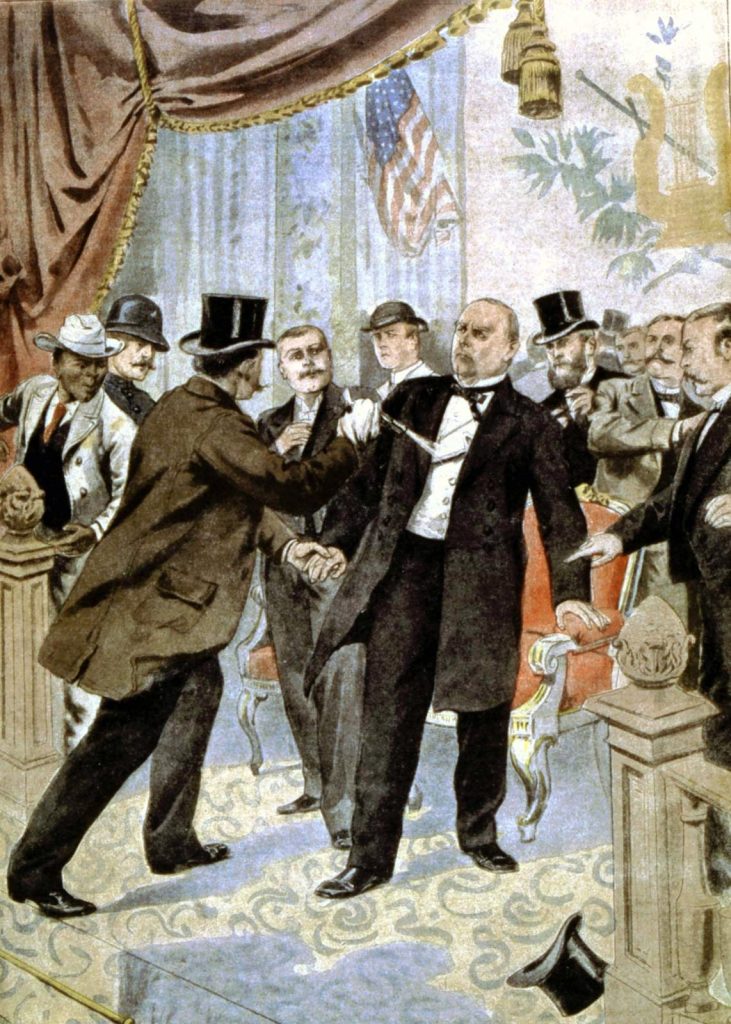
1901 was an eventful year – especially on the national level. President McKinley was shot and killed at the Pam-Am Exposition in Buffalo by a deranged anarchist and Teddy Roosevelt, his Vice President was quickly sworn in as President. Teddy immediately began his assault on the political establishment.
The assassin, Leon Czolgosz, a 28 year old anarchist, managed to approach the President with a revolver hidden in a large bandage on his right hand and fired two shots point blank at the President. The first had little effect and the President picked the slug out his chest himself but the second penetrated the President’s stomach. Czolgosz was prevented from firing a third shot by “Big Jim Parker” an African-American who was standing behind the assassin in the receiving line. McKinley died of gangrene a day later and Czolgosz was quickly tried and executed. The government rounded up all the nation’s notable anarchists including the redoubtable Emma Goldman, the “high priestess of anarchy” “who remarked that it would have been idiocy for her to put such a fool as Czolgosz up to committing such an act.”
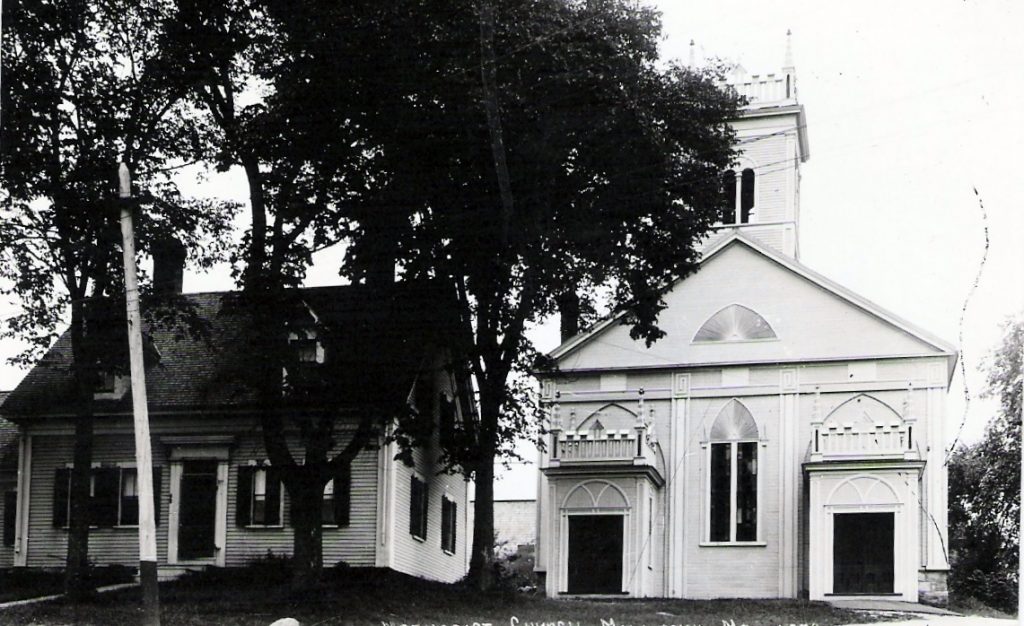
Even in Milltown the shooting of McKinley had repercussions according to local historian Ned Lamb:
“Motion pictures (correct name— the pictures do not move), came along slowly. Men would come to town, hire a hall and give an evening’s entertainment of the new invention. A railway train, waves of the ocean, a bathing scene, and then they would run the film backwards and the bathers would be seen jumping out of the water onto the spring board. It happened in Milltown. The pictures were advertised for the Methodist vestry. It happened to be the day that President McKinley died. Want the date? September 14, 1901. One of the men got up and said, on account of the death of our beloved President, we do not think it proper to put on any Humorous pictures tonight. Then they proceeded to put on one of the best skirt dances we ever saw in a Methodist vestry. The Minister’s wife and another woman went out.”
On another local note the celebrated Passamaquoddy Tribal Brass Band performed at the Pan-Am Exposition.
In other significant 1901 events, oil was discovered in Texas, the American League was founded – its first game being played on April 24 with the Chicago White Sox defeating the Cleveland Blues 8-2, and Winston Churchill rose in the Commons to make his maiden speech in the House of Commons. His detractors claim he never sat down. England at the time was engaged in the Boer War with 1901 and exposes of English misconduct flourished in the press. Today we call such conduct “crimes against humanity”. Luckily the English were diverted from the nearly universal condemnation by the arrival of Sherlock Holmes on the literary scene.
In 1901, according to the census the average American man was 5’ 8”, had a 36 inch chest and weighed 150 lbs. He was an inch taller than his English cousin. His wife was 5’ 4” and weighed 136 pounds. At 37 he will live 30 years. His wife is 35 and will live 33 years. They had three children living, one child having died in infancy, and lived near Columbus, Indiana on a farm of 137 acres, 90 of which are under cultivation.
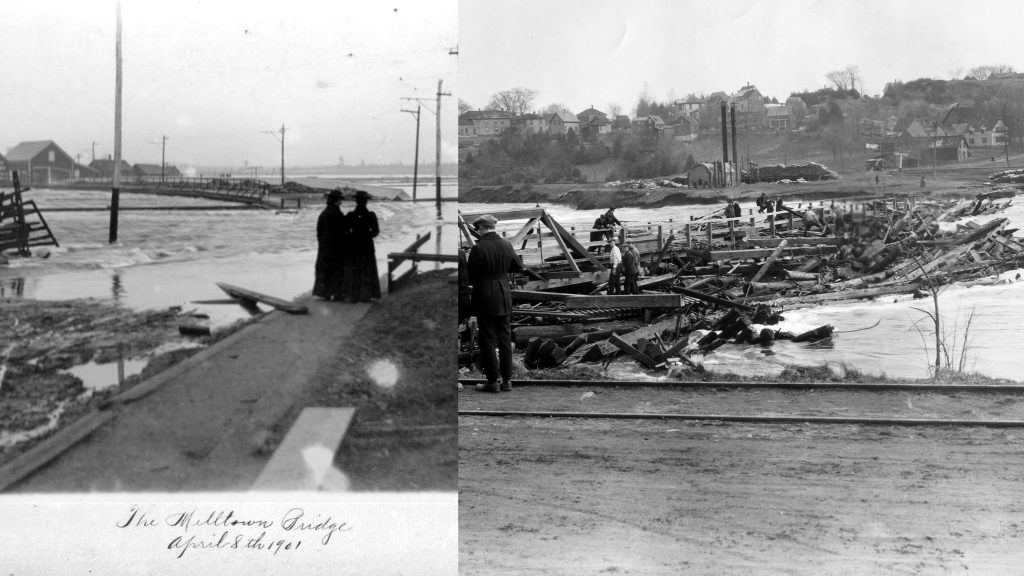
In Calais the flood of 1901 washed out several of the bridges and many of the mills along the river. Floods were quite common in those days although 1901 was an exceptionally bad year. The photo on the right of the collage above shows what was left of the Union Bridge. The building sporting the two smokestacks is easily located even today. Its foundation is near the bottom of Todd Street, which is at about two o’clock in the photo and just a few feet from the end of today’s riverfront walkway.
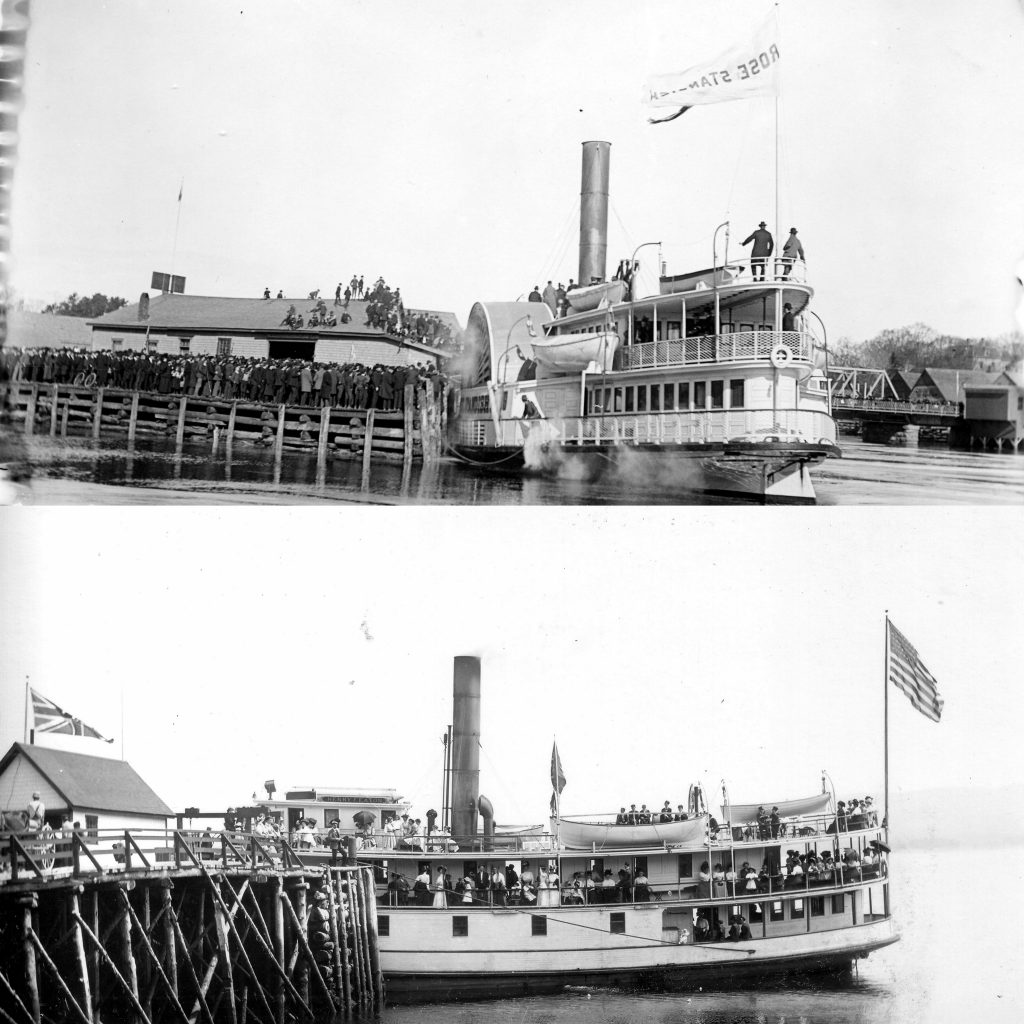
The Rose Standish, Calais’s most beloved steamship, burned at the Steam Boat Street wharf in 1900. She was replaced by the Henry Eaton in 1901. The Henry Eaton is shown above at the upper wharf, just in back of what is now Hardwick’s.
The Rose was a hard act to follow and the Henry Eaton was never able to gain the affection of the locals. Soon after beginning its career on the St. Croix in 1901 it suffered an ignominious defeat in a race from Calais to Robbinston with the Grand Manan steamer, the Aurora, an older and presumed slower steamship.
After losing the race by half a mile, the owners promised to add an additional boiler, but perhaps this improvement had to be delayed after the Henry Eaton rammed the Schooner David Faust later that year near the Ledge about five miles south of Calais. Both ships were damaged and required repair although there were no casualties.
In later years the Eaton gained some popularity as a party boat on which alcohol fueled “excursions” resulted in all sorts of riotous behavior. The lumber baron and ardent Congregationalist Henry Eaton after whom the steamer was named was so incensed by the reports of immoral conduct on the boat that he asked the owners to change the name of the steamer but it remained the Henry Eaton until taken out of service.
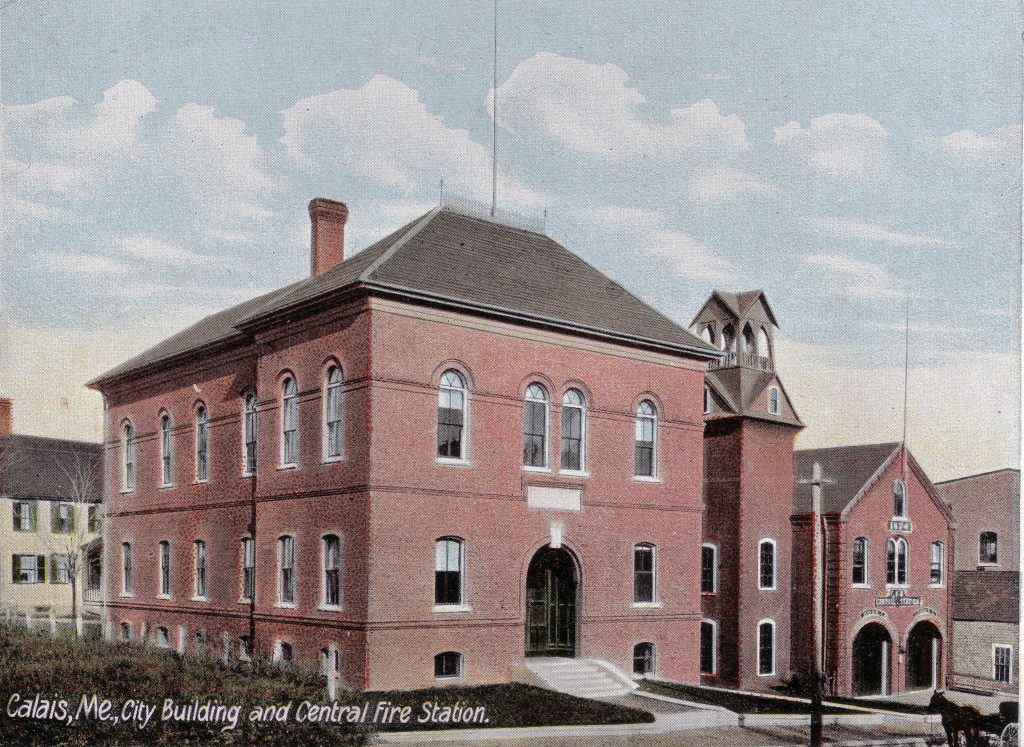
The photo above shows the Calais City Building soon after it was completed in 1901. At the time Bruno Kalish was mayor. Bruno felt Calais’ image was being compromised by its failure to have a decent city hall. At the time city hall was in rented space in the Opera House. Bruno strongly believed a City Building should be erected next to the fire station and constructed of the best Calais brick. Did we mention Bruno owned a brickyard on North Street? Cost overruns and other scandals associated with building led to Bruno’s defeat in the election of 1902 but while his tenure as mayor was short lived the building did meet his expectations. It is solid and 120 years later remains the City Building.
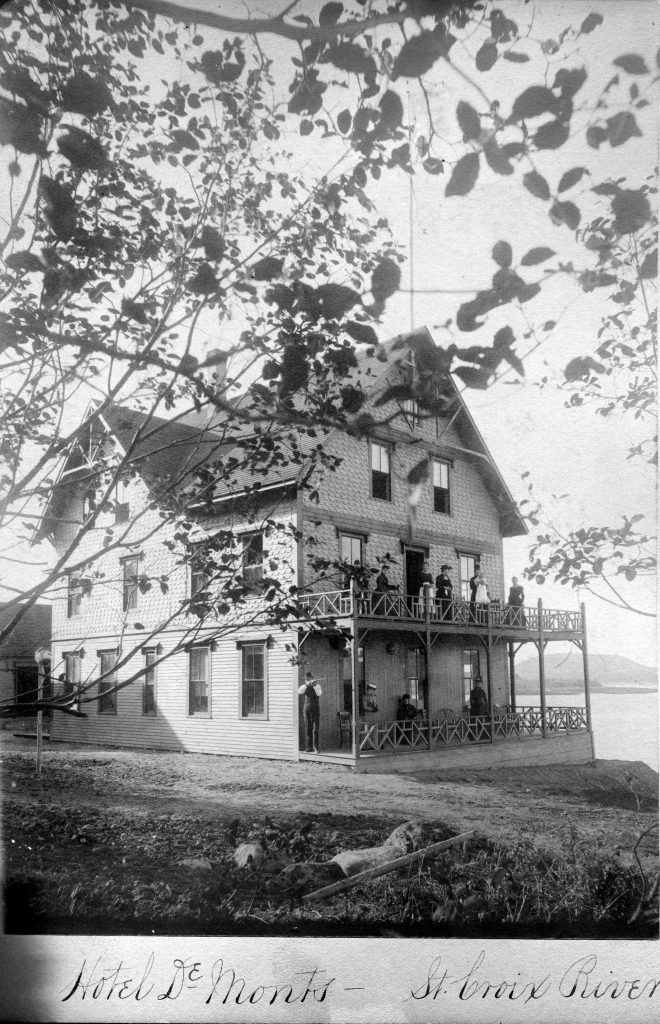
The Hotel Demonts was located at Devils Head. Built about 1880 it burned in 1901. It was a favorite summer retreat from many locals and according to an ad in the Advertiser just before the fire the hungry traveler could get a complete lobster dinner at Demonts for a dollar. The Rose Standish and other river steamers made the hotel a regular stop. If you look at the photo closely you can see a man with a rifle shooting at something while a group of well dressed ladies watch from the second floor balcony.
In other Calais news of 1901 J.M. Kerr of the Union was arraigned in Federal Court in Bangor for smuggling sugar across the river. Bail was set at $300, a substantial amount for 1901 and ten Calais merchants took the train one Saturday morning to Machias to appear in the Superior Court on bootlegging charges. Prohibition never quite caught on in the St. Croix Valley. The Meriden Connecticut newspaper reported that the local photography studio had been bought out by R.E. Clarke of Calais who is “very highly recommended and an artist of exceptional ability.” We find no record of any R.E. Clark or Clarke being a resident of Calais and there was certainly no photographer of that name in the area. Given how connected we are these days we forget how easy it was in 1901 to assume a completely new identity and/or profession by simply moving a few hundred miles or in some cases just to the next county.
From the Portage Wisconsin Register February 14 1901:
Big Buck Kept Hunter in a Tree
John McLaughlin of Calais Me had an exciting experience with a big buck deer near Tomah Stream while hunting. He came upon the buck and fired at short range. The animal dropped in its tracks and McLaughlin supposing it to have been killed rushed up to bleed the carcass. To his great surprise the buck suddenly leaped to its feet and made a savage charge. McLaughlin ran for the nearest tree and was about half way up to the lowest branch when the buck gave him a good strong “boost” with Its antlers. He managed to climb up out of reach and there he sat for three hours when the buck which had put in the time tramping around the tree trotted away into the woods. McLaughlin then climbed down and struck for the camp but in the darkness he lost his way and was forced to spend the night In the woods. Next morning he was found exhausted and half frozen by his friends and it will be weeks before he recovers.
In 1901 Calais miscreants weren’t such a bad bunch. For instance, The Bangor Daily reported:
City Marshal Geo. S. MacDonald arrested a resident of Calais recently for being intoxicated and the prisoner was later given a hearing and sentenced to the county jail at Machias. The officer started to the depot with his prisoner for the ride over the Washington County railroad when he was politely informed by the latter that there was no need of the officer going along, since the St. Croix valley man stated that he would go to the jail alone. Marshal MacDonald gave him the necessary ticket over the line, together with the papers to the jailor and after bidding the prisoner a good bye came back to the city. It is enough to say that the prisoner arrived on time at the Machias jail and will serve out his time for the quiet little drunk that he had on Island City fire water.

In 1901, national papers were advertising the remarkable this pen and pencil holder manufactured by Eastern Mfg in Princeton, although we can’t quite picture the product. In other Princeton news the Honolulu Republican reported that Reverend Moon and his wife, both of Princeton, had arrived in Honolulu enroute to the Philippines where they intended to teach and engage in missionary work. According to the Honolulu Republican they were so enamored of Honolulu many were considering staying in Hawaii. From the Republican:
They Are Charmed With Beautiful City of Honolulu.
BRIEF INTERVIEWS OF THEIR IMPRESSIONS OBTAINED FROM A NUMBER.
A number of the teachers on board the transport Sherman en route to the Philippines were interviewed last night by a Republican reporter. The pedagogues of both sexes have been making the most of their time in Honolulu, and Bishop’s Museum and the Kamehameha schools were visited by many of the teachers, while others enjoyed the surf at the view from Punchbowl or a trip to Pacific Heights. They all declare themselves delighted with Honolulu, and many of them expressed the wish that they might remain here instead of continuing to the doubtful joys of the Tagalog districts in the wilds of the Philippines. A number of the brief interviews are given below:
S. C. Moon, Princeton Maine:
I do not know just what I shall do or to what position I shall be assigned in the Philippines, as we, I believe, are to be somewhat at the mercy of the educational authorities at Manila. They tell me that it may be an Arcadia all over again and that husband and wife are quite liable to be apportioned to schools at the opposite ends of the earth. If this is so the thirty couples that took their marriage vows on board the Thomas must have found their plans somewhat interfered with. Mrs. Moon is with me, and she is somewhat alarmed lest she will be deprived of my companionship. I think, however, that we may be more fortunate than some others. I have been in educational work for some time and was formerly the principal of the high school at Princeton, Maine, so I am looking forward to a position in Manila. I am delighted with Honolulu; It has a very soothing, peaceful climate, and the natural beauties of the place are wonderful. It is also a surprisingly modern and energetic city.
Mrs. Etta Moon:
I am not content with paying tame compliments to your marvelous city. I am fascinated with the charms of climate, scenery and people. I have never been in so thoroughly cosmopolitan a city before. It seems strange to me to see so many different nationalities mingling together in perfect harmony, although each race seems to adhere to its own method of dress, and largely to its own language. It is a most interesting city, and I shall be very busy all the time I am here, looking into these queer and fascinating things. The coloring of the mountains and valleys Is beautiful, and such skies! I think the tropics are beautiful. I presume this must be a very popular winter resort. It certainly ought to be.
In Woodland the Washington County Railroad built a new steel bridge to Sprague’s Falls amid persistent rumors in the national press that a pulp mill might be constructed at the Falls.
In Robbinston, John Stevens, know as “Black Jack” went missing and rumors of foul play abounded:
Bangor Daily 17 September 1901:
A R0BBINST0N MAN MISSING
Friends of John Stevens Are “Somewhat Alarmed”
St. Croix Valley News. (From Our Regular Correspondent.) CALAIS, Sept 17
The story came from Robbinston Sunday, that a man named John Stevens belonging in this city, but lately living at Robblnston was missing from that place and was supposed to have been drowned. The facts in the case will probably be brought to light today, but it is not at all unlikely that Stevens will turn up all right. However, one of the stories circulated Sunday was that he had gone out on board a schooner which was anchored there and that in a scuffle which ensued between him and one of those on board the schooner, Stevens had been knocked overboard. In the meantime, the schooner had weighed anchor and sailed away. Blackjack as he is nicknamed by his friends, is well known in this city where he was for many years employed as a stable hand by F. T. Waite. Jack of late years has owned a valuable St. Bernard dog which has been his constant companion, no matter where he camped for the night, and it is the fact that this dog has returned to his masters boarding place at Robbinston without him, that causes the alarm to be felt by his friends. Stevens was unmarried and owned a house and some land near Knight’s corner on North Street.
Another report claimed:
…“that Stevens was either drowned or carried away on the lighter, which sailed early that morning. All sorts of stories have been told, but it is known that Stevens and a party of men were engaged in drinking the night before, and that the Captain had tried to ship Stevens as a sailor. There was, no doubt, more or less carousel, and perhaps a row. It is also learned that the Captain told the people at the Small house that he had hired Stevens to sail with him as his only crew. It is also said that a third party was on board the vessel-a woman-well known in Calais. The woman went on board the vessel with the Captain. What has transpired since that time can only be imagined, until the woman and the Captain are given a hearing”.
As far as we can tell there was no hearing or further investigation, the Captain sailed as soon as he could weigh anchor the next day and the “well known” woman from Calais was not identified. Black Jack’s body was found and the family interred Black Jack in the Calais cemetery.
In other Robbinston news of 1901 the Bangor Daily reported in August that the Shore Line Band of Calais took the Steamer Henry Eaton downriver to Robbinston “where they will go into camp for the next two weeks and expect to give band concerts to the downriver folks every evening.” It was common back in those days for the local bands to tour the outlying towns and villages where diversions were few.
On May 29, 1901 the Bangor Daily reported that two Robbinston men “have gone insane there in the past week” which could be a serious financial problem for the town as the Selectmen were responsible for committal of those with mental health issues and at least some of the expense of institutionalization.
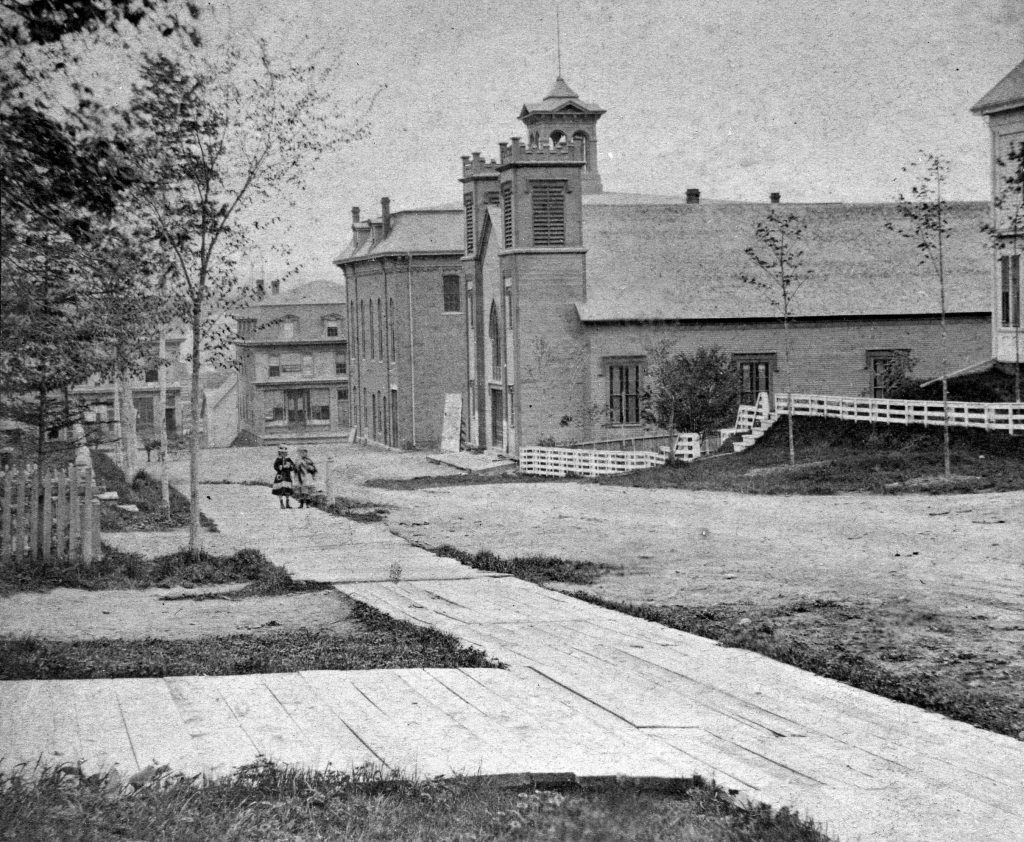
[Note: in the late 1800s the hemlock forests were clear cut to provide hemlock bark for the tanneries. The trees themselves were generally left on the ground to rot and hemlock lumber was very cheap. Many towns built sidewalks of hemlock like those shown above and Patrick Meyers would have had the responsibility of maintaining these sidewalks.]
Finally the story of Patrick Meyers of Calais who never quite forgave the government for refusing to allow him to enlist and fight the Rebs in 1864 because of his age which was, as he points out, only 68.
From the Chicago Journal 1901:
CENTURY OLD AND WORKING WONDER
What Will Happen To Him When He Gets Aged
The new superintendent of streets at Calais Me has just reappointed Patrick Meyers who will be 105 years old next June to his old place as custodian of the city sidewalks, a post which he has held for 37 consecutive years. In 1864 when substitutes were getting from $3OO to $1000 to go to the war and national and state bounties made the total sum up to $1500 to $1800 Myers enlisted and having passed a successful examination as to physical abilities was rejected on account of his age being 68 years old at that time “It was discouraging to me” said Myers in speaking of the matter last week “I was a poor man and the bounty money would have bought me a fine home which I should have enjoyed after serving out my time in the army I felt so bad that I didn’t care to do any kind of work for nearly a year I knew I was as strong and healthy as I ever was and age doesn’t count to men built the way I was. After a time I secured a Job for the city to work on the streets. When I had been digging sewer ditches and shoveling dirt for ten years they put me in charge of the sidewalks where I have been for a long time. My work is not hard but it keeps me busy I earn my money and intend to stick to the work as long as they will have me.”
The old man lives in a small house which he has bought and paid for out of his earnings at $1.50 a day. His widowed daughter acts as housekeeper for him. Report says he has a tidy sum in the local savings bank. His body is bent from hard work and he limps at times when the rheumatism gets into his legs but his general health is still good . He eats three meals a day and sleeps ten hour every night. He has smoked two 10- cent plugs of tobacco a week for the past 91 years, never any more or less. Years ago he took a glass of whiskey when he felt he needed it but was never addicted to the habit. Since he has passed his hundredth birthday he has frequently regretted that he was not permitted to enter the army. “If I had served a year or two,” said he, “I might get a pension to help me out when I grow old and unable to work. Lots of men younger than I am who were in the army and never received a scratch are drawing as much as $12 a month I am told.”
